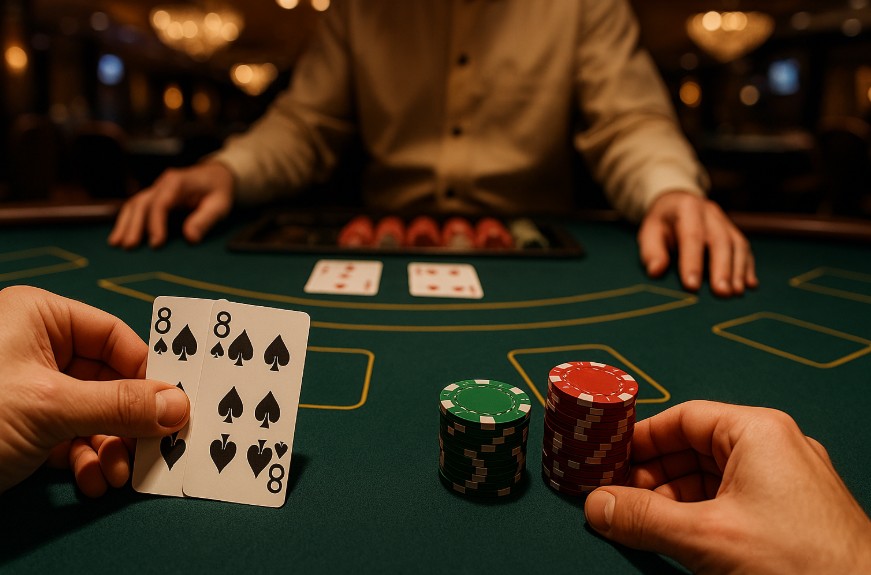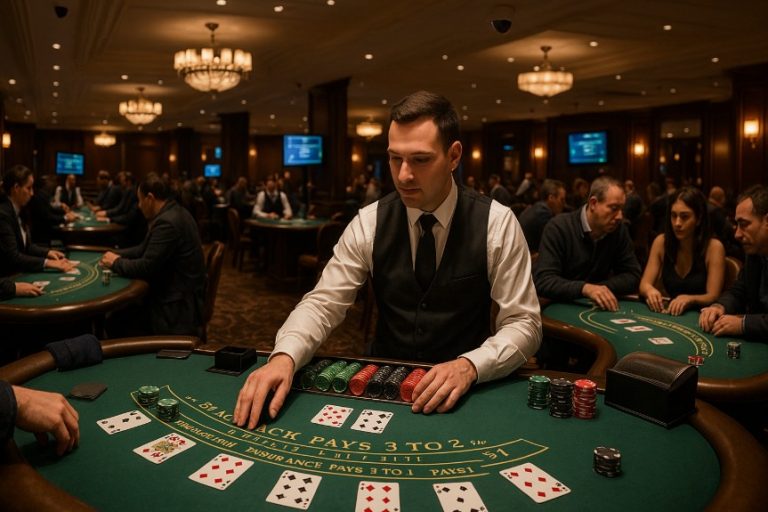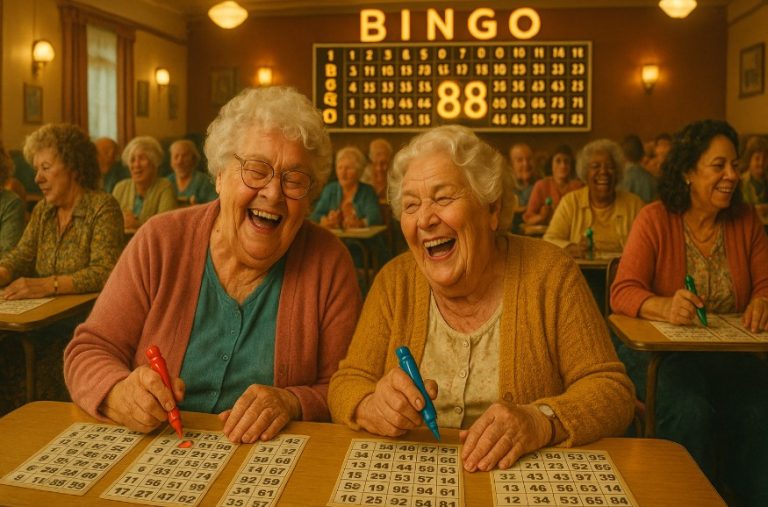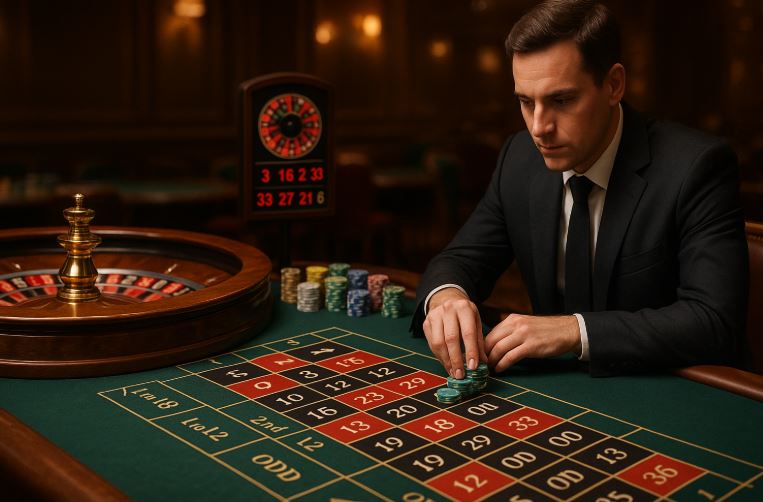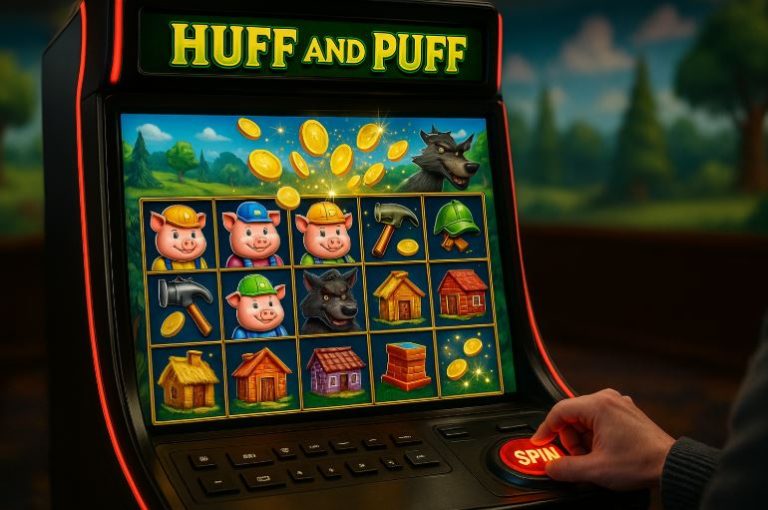What Is a Split in Blackjack and When Should You Use It?
Understanding the nuances of blackjack can transform a casual player into a strategic expert. One of the most important techniques in the game is splitting, which allows a player to turn a single hand into two, potentially increasing the chances of a win.
But what is a split in blackjack, and how can players make the most of this opportunity without increasing their risk unnecessarily?
This guide will walk through the fundamentals, rules, strategies, and common mistakes around splitting in blackjack, helping UK players make informed decisions at the table.
What Does It Mean to Split in Blackjack?

Splitting in blackjack is a strategic move that occurs when a player is dealt two cards of equal value.
This could be a pair of numerical cards, like two 6s, or face cards of the same value, such as a Jack and a Queen (both valued at 10 in blackjack).
Instead of playing them as a single hand, the player has the option to split the cards into two separate hands.
Each new hand requires a second wager equal to the original bet.
The dealer then deals an additional card to each of the split hands, and the player proceeds to play both hands independently.
This mechanic opens up the possibility of turning a weak or average hand into two potentially strong ones.
A unique rule applies when splitting aces. If a player receives two aces and decides to split, each ace is given only one more card, and the hand is automatically considered complete.
Even if a 10-value card is dealt onto an ace, it only counts as 21, not a natural blackjack, meaning it is typically paid out at 1:1 rather than the traditional 3:2.
Splitting introduces variability into the game. It enables players to navigate less favourable hands with greater strategic flexibility, provided they understand when and how to use it to their advantage.
What Are the Rules for Splitting in Blackjack?
While the core concept of splitting is consistent across most blackjack tables, the exact implementation can vary slightly depending on the house rules.
These rules govern not just when you can split, but how many times and under what conditions.
Players are permitted to split when they are dealt a pair of two cards of the same numerical value. For example, two 7s, two Kings, or even a 10 and Queen (which both carry a value of 10) can be split.
Upon choosing to split, players must match their initial bet with a second wager of equal value. The dealer will then issue one additional card to each of the split cards, and each hand will be played in sequence.
Key rules to keep in mind include:
- Splitting aces typically comes with a limitation: players receive only one card per ace and cannot draw further cards.
- Re-splitting may be allowed if another matching card is dealt after the initial split. For instance, if you split two 8s and draw another 8, some casinos allow a second split, creating three hands.
- Most casinos limit the number of times a player can split, usually to three or four hands in total.
Knowing these rules is essential, particularly when playing in new environments, as incorrect assumptions about house policies can lead to costly errors.
When Should You Split in Blackjack?

In blackjack, splitting is one of the most important decisions a player can make. It’s not just a tactical option; it’s a strategic move that can significantly increase a player’s chances of winning, when used at the right time.
The decision to split depends not only on the cards in hand but also on the dealer’s upcard. Below is a breakdown of the most optimal times to split in blackjack, with explanations for each situation.
Always Split Aces
Splitting aces is one of the most universally accepted strategies in blackjack. When a player receives two aces, they are initially holding a total of 12, which is a weak starting hand.
However, splitting them allows the opportunity to build two hands that each start with an ace. If a ten-value card lands on either ace, the hand becomes a 21.
While most casinos will not treat this as a natural blackjack, meaning it will be paid out at 1:1 instead of the standard 3:2, the statistical advantage of potentially reaching 21 outweighs the payout reduction.
Furthermore, most blackjack rules limit each ace to receiving only one additional card and do not allow further hits. Even with that restriction, splitting aces is always the superior choice over playing them together.
Always Split 8s
A pair of eights combines to form a total of 16, which is widely considered the weakest total in blackjack.
It leaves the player in a difficult position, too low to confidently stand and too high to risk a hit without the danger of going bust.
By splitting the eights, the player resets their hand and has the chance to form two stronger hands with the potential to build up to 18 or 19.
The benefits are even more apparent when the dealer has a weak upcard, such as a 4, 5, or 6.
But even when the dealer has a strong card, playing two hands starting from 8 is still preferable to managing a total of 16.
Split 2s and 3s When the Dealer Shows 2–7
Small pairs such as twos and threes may not seem valuable, but when the dealer is showing a weak upcard, these can be turned into competitive hands.
Splitting 2s and 3s gives the player a better chance of improving each hand independently and potentially taking advantage of a dealer bust.
This strategy is particularly effective when the dealer’s visible card is between 2 and 7. In these cases, the statistical edge favours the player because the dealer is at higher risk of exceeding 21 when drawing.
However, if the dealer shows a high card like 8 or above, splitting low pairs becomes a less effective strategy and may lead to losing both hands.
Split 6s When the Dealer Shows 2–6
A total of 12 is not a strong position in blackjack, especially against certain dealer upcards. When the dealer has a low card showing anything between 2 and 6, splitting a pair of sixes becomes a much more favourable option.
By separating the 6s, the player gives themselves two chances to build up from a mid-value starting point and create hands that can challenge or beat the dealer’s total.
This tactic works best when the dealer’s upcard puts them in a weak standing, increasing the likelihood that the dealer will bust as they draw additional cards.
Split 7s When the Dealer Shows 2–7
A pair of sevens totals 14, which is another hand that puts the player in an uncomfortable position. It is too weak to stand against most dealer hands and hitting can often result in a bust.
When the dealer’s upcard is weak between 2 and 7, the better option is to split.
Splitting sevens allows the player to potentially create two hands that are stronger than the original total and capitalise on the dealer’s disadvantage.
If the dealer is showing an 8 or higher, though, splitting 7s becomes riskier and should generally be avoided.
Split 9s in Specific Situations
Unlike many other pairs, splitting nines is a more nuanced decision. Together, two nines make a total of 18, which is a strong hand on its own.
However, in certain scenarios, splitting 9s is statistically the better move. When the dealer has an upcard of 2 through 6, or 8 and 9, splitting allows the player to aim for two winning hands instead of settling for a single hand with 18.
Against these dealer cards, the chances of both split hands succeeding are higher. That said, when the dealer shows a 7, the player should not split, as the dealer is likely to reach a total of 17, making the original 18 more favourable.
Similarly, if the dealer has a 10 or ace, the risk of splitting outweighs the potential gain, and keeping the total of 18 is generally the best approach.
When Should You Not Split in Blackjack?

While splitting offers strategic advantages, there are specific situations where it can do more harm than good.
One of the most common mistakes is splitting a pair of 10-value cards. A combined hand of 20 is very strong in blackjack, and breaking it up reduces your odds of winning.
Another scenario to avoid is splitting a pair of 5s. Together, they form a total of 10, which is an excellent candidate for doubling down. Splitting them would instead result in two hands starting from a weaker position.
Other important cases include:
- Avoid splitting 4s unless the dealer is showing a 5 or 6. A pair of 4s (total of 8) is better played as a single hand.
- Do not split small pairs like 2s, 3s, or 6s if the dealer has a strong upcard (7 through Ace). The likelihood of winning with split hands against a strong dealer is significantly reduced.
Making the wrong decision can lead to two losing hands instead of one potentially competitive hand. Therefore, it’s essential to assess not only your cards but also the dealer’s upcard before deciding to split.
What Is the Blackjack Split Chart?
A blackjack split chart provides a clear and concise strategy for every possible pair versus every dealer upcard. It helps players make the right decisions by removing guesswork and relying on mathematically proven outcomes.
Here is a simplified version of the blackjack split chart:
| Your Cards | Dealer’s Upcard | Recommended Action |
| Aces (A, A) | Any | Always Split |
| 8s (8, 8) | Any | Always Split |
| 10s or Face Cards | Any | Never Split |
| 9s (9, 9) | 2–6, 8–9 | Split |
| 7, 10, Ace | Don’t Split | |
| 7s (7, 7) | 2–7 | Split |
| 8–Ace | Don’t Split | |
| 6s (6, 6) | 2–6 | Split |
| 7–Ace | Don’t Split | |
| 5s (5, 5) | Any | Never Split |
| 4s (4, 4) | 5–6 | Split |
| Other Cards | Don’t Split | |
| 3s (3, 3) | 2–7 | Split |
| 8–Ace | Don’t Split | |
| 2s (2, 2) | 2–7 | Split |
| 8–Ace | Don’t Split |
This chart is based on statistical probabilities that favour the player over thousands of hands. While it may not guarantee success in every individual round, over time, it reduces the house edge and improves overall performance.
What Is the Strategy Behind Splitting in Blackjack?
The primary objective behind splitting is to optimise potential winning outcomes. When executed properly, splits can allow players to transform weak or average hands into two viable hands, each with a separate chance to beat the dealer.
The key to strategic splitting lies in assessing both the player’s hand and the dealer’s upcard. When the dealer is at a disadvantage, typically indicated by an upcard between 2 and 6, the chances of the dealer busting are higher.
In such scenarios, splitting hands gives players more opportunities to capitalise on the dealer’s vulnerability.
This approach forms part of the broader blackjack basic strategy, which is derived from probability theory and simulations run across millions of hands.
By sticking to the recommended plays from this strategy, players can reduce the house edge from 2% to as low as 0.5%.
Using a split strategy effectively also requires good bankroll management. Since each split doubles your stake, frequent or inappropriate use of splits can quickly deplete your chips.
What Are Common Mistakes Players Make When Splitting?
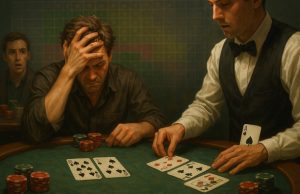
Mistakes in splitting often stem from emotional decisions or misinterpretations of basic strategy.
One of the most frequent errors is splitting tens, often made in the hope of turning a winning hand into two. Statistically, however, the potential loss outweighs any minimal gain.
Other common errors include:
- Attempting to hit after splitting aces, which is usually against the rules.
- Splitting small pairs without considering the dealer’s strong upcard.
- Forgetting to place an equal second bet when splitting, which can lead to confusion or invalid plays.
To avoid these errors, it’s essential for players to internalise basic strategy and regularly practise their decision-making in low-risk environments.
How Can Beginners Practise Blackjack Splits?
Beginners who want to become proficient in splitting should consider several practice methods.
Many online casinos offer demo versions of blackjack games where players can try out different strategies without financial risk.
Additionally, mobile apps with built-in strategy charts and simulations allow players to explore various scenarios and outcomes.
These tools are especially useful for understanding how and when to split based on the dealer’s card.
Practical tips for mastering splits include:
- Printing a blackjack split chart and referring to it during gameplay.
- Watching instructional videos that walk through real examples.
- Playing low-stake games to build confidence and test strategies.
With regular practice, even novice players can turn splitting into a powerful tool in their blackjack arsenal.
Conclusion
Splitting in blackjack can be a powerful strategy when used wisely. Understanding the rules, knowing when to split (and when not to), and practising with real or virtual hands can significantly boost a player’s success rate.
For UK players, mastering the art of the split is one of the quickest ways to turn a game of chance into a game of skill.
FAQs About Blackjack Splits
What happens if I split and then get another pair?
Some casinos allow re-splitting, which means you can split again if you receive the same card. For example, splitting 8s and receiving another 8 lets you split once more, creating three hands.
Do all blackjack games allow splitting?
Most traditional blackjack games allow splitting, but rules may vary. Online games and some variants may have different policies, especially regarding re-splitting or splitting aces.
Is it better to split or double down?
It depends on the hand. Splitting is ideal for pairs, while doubling down is often used for totals like 10 or 11 when the dealer shows a weak card.
Can I split in live dealer blackjack?
Yes, most live dealer blackjack platforms offer full rules, including splitting and doubling options. Make sure to read the specific rules before playing.
Is splitting profitable in the long run?
When done correctly and based on strategy, splitting can increase profitability by giving players more chances to beat the dealer. However, misuse can increase losses.
Why is splitting 8s always recommended?
A pair of 8s totals 16 a very weak hand. Splitting 8s gives you a much better chance of creating two stronger hands.
What’s the difference between splitting and doubling down?
Splitting creates a second hand with a new bet, while doubling down increases your original bet by 100% and allows only one more card.
Disclaimer:
UK Casino Blog does not operate or promote any form of gambling. All content is for news, analysis, and educational purposes only. Please gamble responsibly and seek help if you are affected by gambling-related issues.

